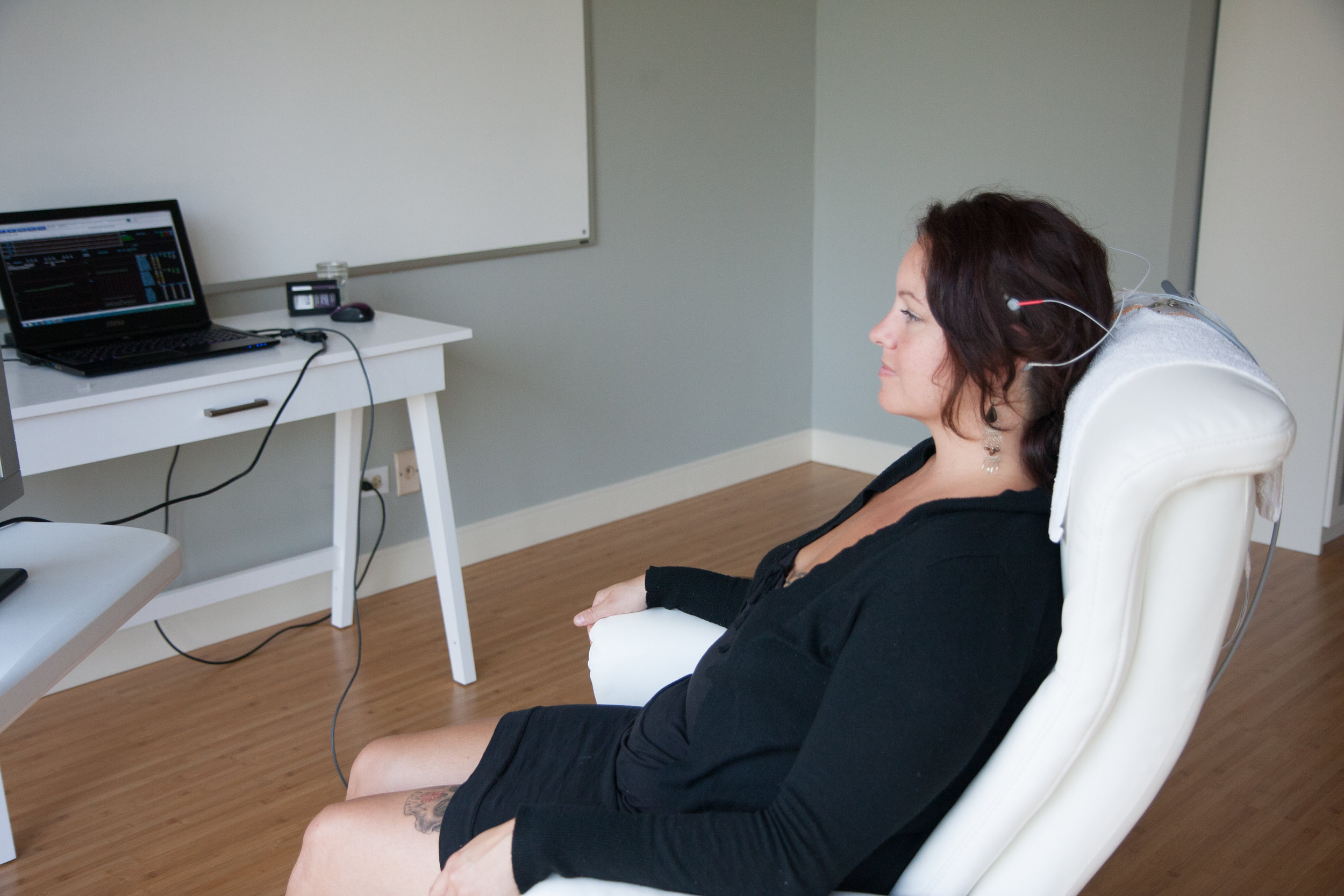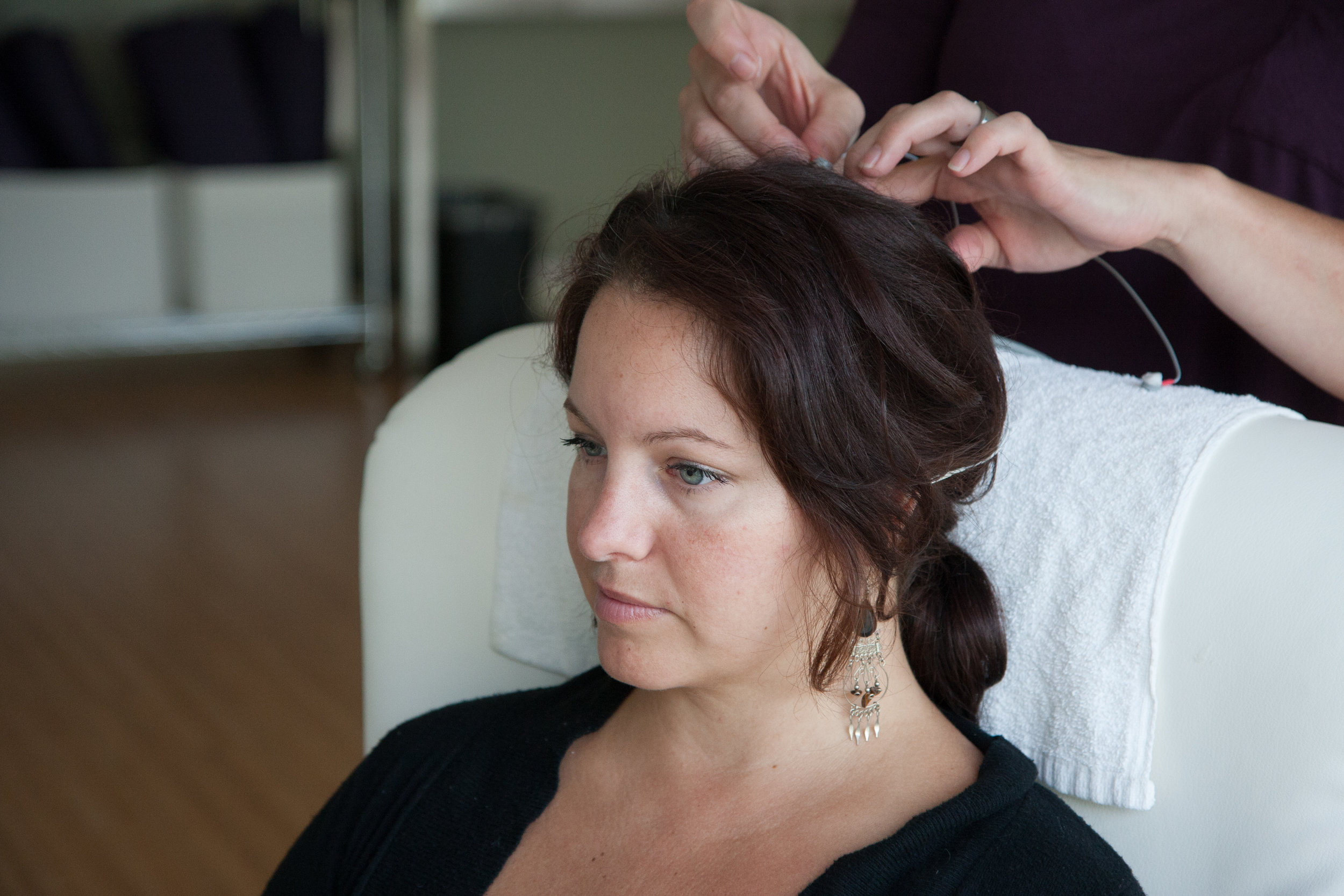Neurofeedback
-
Neurofeedback is a computer-based therapy where the brain is given information about how it is performing in order to help it function better. The type of neurofeedback that I do most frequently is called Infraslow Fluctuation, or ISF. The purpose of ISF training is to help regulate your autonomic nervous system and to bring more flexibility to the way your brain is working.
There are several types of neurofeedback, you can find more information here
Powerpoint slides for additional general neurofeedback information can be found here.
-
Our sessions will begin twice weekly and last for about 45-50 minutes each. You will sit comfortably and listen to a tone that is a reflection of your brainwave activity. Once in a while clients will watch a movie during the training or talk through some concerns, but it is encouraged to make the session a time for relaxation and becoming aware of changes occurring in your body. Here is a link to a video describing ISF neurofeedback with a brief demonstration of a session.
-
There is no right answer here. A lot of variables come into play – the severity of the presenting concerns, self-care strategies already in place for the client, lifestyle, current medications, etc. Most people notice changes beginning to happen in the first few sessions. I encourage people to allot for about 40 sessions in their mind when they begin training but they often know well before then if it is having the desired effects.
-
I find that this type of work can be really helpful for those who have tried talk therapy but still feel like their body or brain has some “stuck” patterns. High anxiety and panic attacks, physiological signs of anxiety such as digestive troubles or disrupted sleep, and those with early trauma often notice profound changes.
ISF neurofeedback can bring a new sense of calm to the system and regulate many bodily processes. I find myself working with a variety of “tough” cases where the client has tried a lot of traditional therapies and is still searching for relief. I also very much enjoy working with other therapists.
-
Short answer, yes. Long answer, I like to work with parents first. Dysregulation is often a chain reaction and happens between people. If the child is easily dysregulated the parent can find themselves getting triggered quite easily. If we can help bring balance to the parent first, that can go a long way in beginning to help the child. There are absolutely exceptions to this, and I always suggest a phone consultation first to discuss the presenting concerns and determine if this work is a good fit.
-
In 2010 I began my career in neurofeedback practicing traditional neurofeedback, by utilizing qEEG and doing training protocols based on the acquired brain map. I found this type of neurofeedback to be quite productive. However, in 2014 I took a training in ISF neurofeedback and was struck by its rapid ability to change how one feels and its overall effectiveness. Since then ISF has been the primary modality of neurofeedback I use in my practice. As the field of ISF neurofeedback has advanced over the last few years, the training has become much more efficient and successful. It remains one of the most powerful interventions I have come across for addressing mental health concerns.






